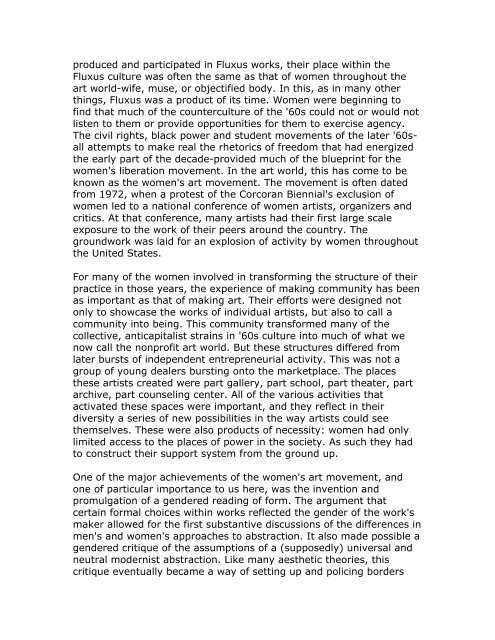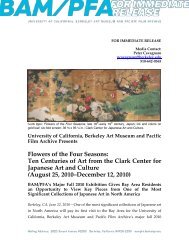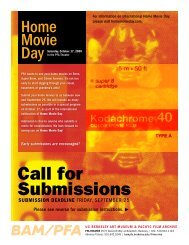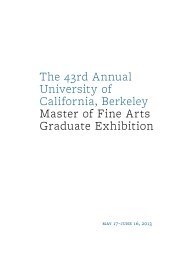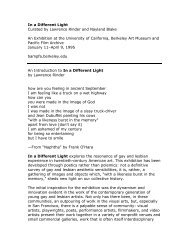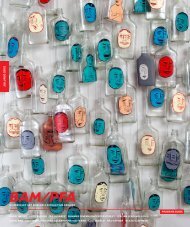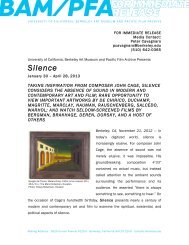Curating In a Different Light by Nayland Blake (PDF) - Berkeley Art ...
Curating In a Different Light by Nayland Blake (PDF) - Berkeley Art ...
Curating In a Different Light by Nayland Blake (PDF) - Berkeley Art ...
You also want an ePaper? Increase the reach of your titles
YUMPU automatically turns print PDFs into web optimized ePapers that Google loves.
produced and participated in Fluxus works, their place within theFluxus culture was often the same as that of women throughout theart world-wife, muse, or objectified body. <strong>In</strong> this, as in many otherthings, Fluxus was a product of its time. Women were beginning tofind that much of the counterculture of the '60s could not or would notlisten to them or provide opportunities for them to exercise agency.The civil rights, black power and student movements of the later '60sallattempts to make real the rhetorics of freedom that had energizedthe early part of the decade-provided much of the blueprint for thewomen's liberation movement. <strong>In</strong> the art world, this has come to beknown as the women's art movement. The movement is often datedfrom 1972, when a protest of the Corcoran Biennial's exclusion ofwomen led to a national conference of women artists, organizers andcritics. At that conference, many artists had their first large scaleexposure to the work of their peers around the country. Thegroundwork was laid for an explosion of activity <strong>by</strong> women throughoutthe United States.For many of the women involved in transforming the structure of theirpractice in those years, the experience of making community has beenas important as that of making art. Their efforts were designed notonly to showcase the works of individual artists, but also to call acommunity into being. This community transformed many of thecollective, anticapitalist strains in '60s culture into much of what wenow call the nonprofit art world. But these structures differed fromlater bursts of independent entrepreneurial activity. This was not agroup of young dealers bursting onto the marketplace. The placesthese artists created were part gallery, part school, part theater, partarchive, part counseling center. All of the various activities thatactivated these spaces were important, and they reflect in theirdiversity a series of new possibilities in the way artists could seethemselves. These were also products of necessity: women had onlylimited access to the places of power in the society. As such they hadto construct their support system from the ground up.One of the major achievements of the women's art movement, andone of particular importance to us here, was the invention andpromulgation of a gendered reading of form. The argument thatcertain formal choices within works reflected the gender of the work'smaker allowed for the first substantive discussions of the differences inmen's and women's approaches to abstraction. It also made possible agendered critique of the assumptions of a (supposedly) universal andneutral modernist abstraction. Like many aesthetic theories, thiscritique eventually became a way of setting up and policing borders


